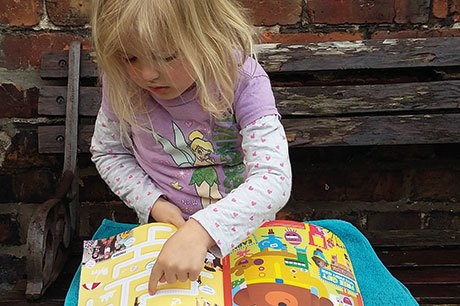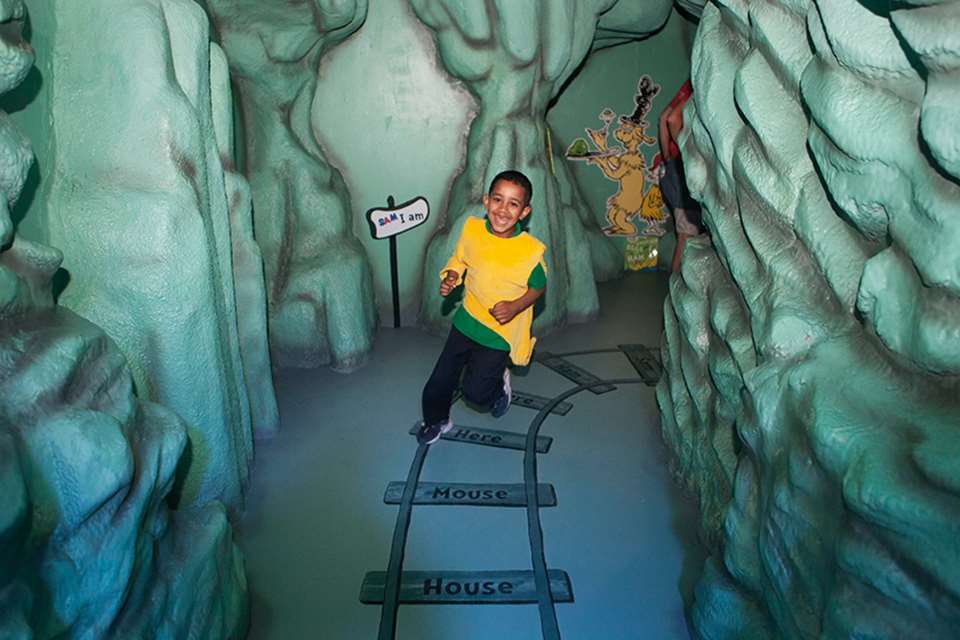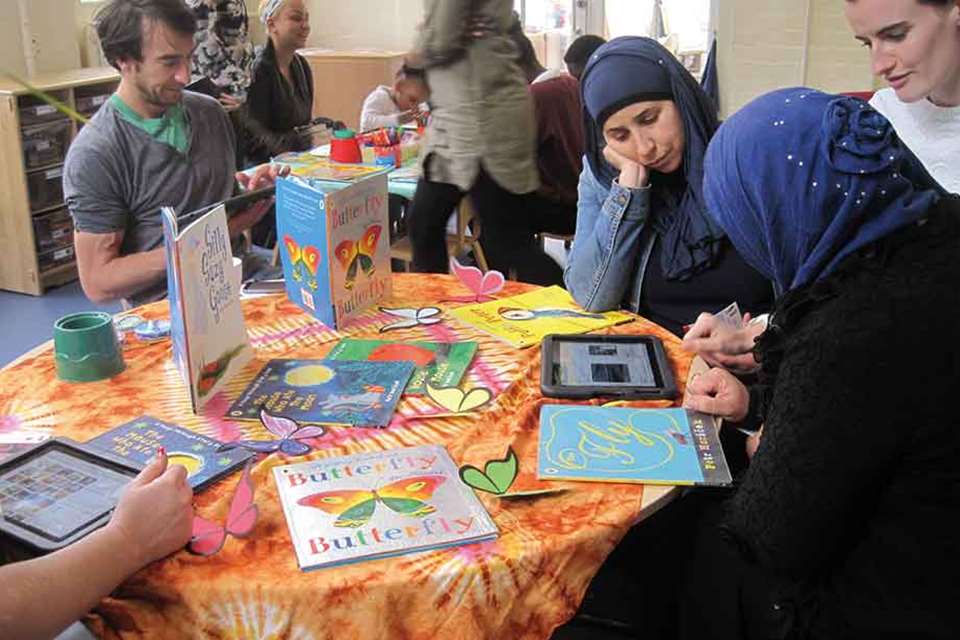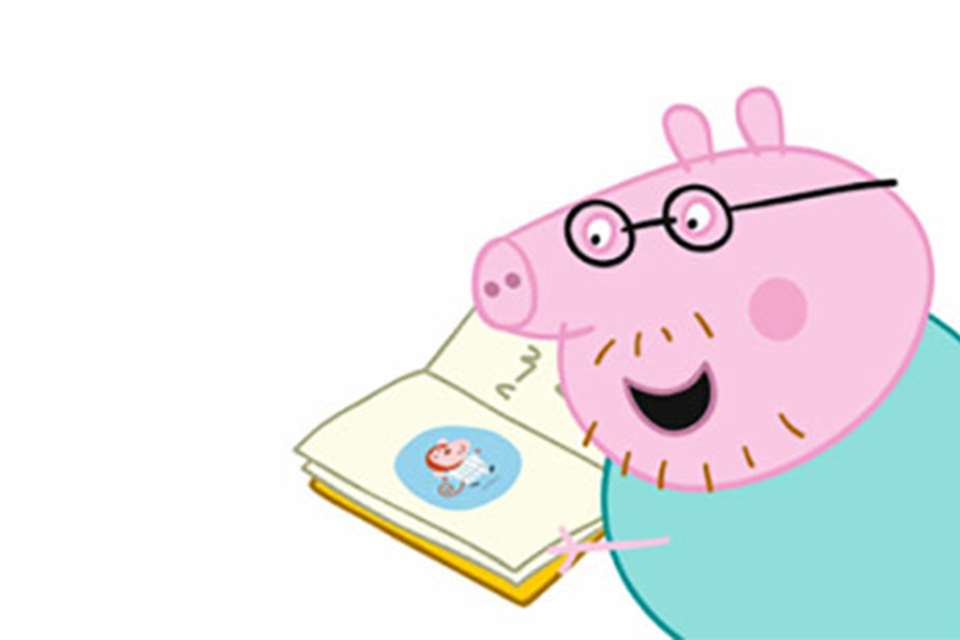Enabling Environments: Media - Comic timing
Yasmin Stefanov-King
Monday, May 1, 2017
Comics and cartoons, in whatever medium they come in, can help develop children’s literacy and self-esteem, but their depiction of family structures is limiting, finds Yasmin Stefanov-King

Comics can evoke many happy childhood memories – stealing a sibling’s copies of The Beano, reading Bunty, graduating to the photo-story publications of Jackie or enjoying more recent titles such as Mizz, Girl Talk and My Little Pony. But what is the value of comics to early learning, particularly now that many have moved from a purely literary format to part of a multi-media approach, with the characters appearing in books as well as on YouTube, nappies, pasta, in cartoons and on clothing?
Historically, comics have been seen as ephemeral (see box, overleaf). Roy of the Rovers creator Frank Pepper described them as ‘designed to amuse children and to be forgotten when next week’s instalment came out’ (Chapman 2011). However, this overlooks their potential impact on young children’s literacy development and sense of self-esteem.
LITERACY
Young children’s focus, as we know, is primarily visual, as opposed to text (Roethler 1998). Comics, like picture books, form connections between these two formats, and need the child to deconstruct what they see in order to understand the story.
Krashen (2004) argues that light reading develops into serious reading, and comics enable that. We need to recognise that with comics we have a form of literature that children are actively choosing to engage with, and as practitioners we need to think about how we use them to the best effect.
Comics have also been suggested as positive for supporting children on the autistic spectrum, through their use of stylised emotions, symbols and backgrounds (Kobe 2008).
FAMILY LIFE
Less positive, as I found in my own research, is the inclusive nature of comics, particularly in their depiction of family life. I focused on the way in which families were represented within publications aimed at three- to five-year-olds and whether the families depicted were representative of 21st century British society (see below).
According to the Office for National Statistics, there are eight family structures with dependant children present in the UK. However, looking at the storylines and families in the comics under review, it soon became evident that the majority of family groups were under-represented, if they existed at all. A number of storylines were based upon 19th-century fairy tales or characters from alternate time frames, and once these were excluded, the figures become more concerning.
While 16 per cent of children live in opposite-sex cohabiting families, these were not depicted within the comics under review. In fact, only two family structures were evident – the lone mother (12.5 per cent) and the heterosexual, married couple (87.5 per cent). There was no depiction of the lone father, blended family or single-sex family.
Central characters such as Peppa Pig, who appears in multiple formats and even has her own ‘world’, focused heavily on the nuclear family, with Mummy and Daddy Pig, Peppa and George. Storylines involve multiple families, but they too are almost invariably nuclear in their structure – there may be a father who works away, but he does return home.
Pre-school favourites Topsy and Tim, Boj, Dr McStuffins, Fireman Samand Ben and Hollyall involve the nuclear family apart from one or two exceptions – where a lone mother may be present, as in the case of Norman Price’s mother in Fireman Sam(and Norman – as any avid Fireman Sam watcher knows – is the ‘naughty’ boy).
BEST PRACTICE
Stereotypical images are not new to comics (see below), so why do they matter? Because children need to see themselves reflected back in their environment, particularly at this stage in their life, when they are developing their concepts around what a family is.
Research by Powell-Hopson on positive self-esteem and healthy self-identity among African-American children found that parents and practitioners needed to ‘expose children regularly to Black Americans in positions of authority and power’ (Powell-Hopson and Hopson 1988). If we extend this to the children in our care, then there we need to think about how we represent the idea of families within our settings.
The narrow view of family life does not mean banning comics from early years settings – given their potential benefits to children’s literacy development, their use should be encouraged. It does, however, require practitioners (see box, below) to reflect on the messages that comics give about family life and ensure that other images within the nursery environment incorporate the full range of family structures.
In the 21st century, no setting would dream of depicting only white males in powerful roles, yet we continue to suggest that, when it comes to family, nuclear is best.
CHARACTERS AND COMICS: UNDER REVIEW
21st century characters: Charlie and Lola, Topsy and Tim, Boj, Dr McStuffins, Fireman Sam, Peppa Pig, Ben and Holly, Angelina Ballerina.
21st century characters set in alternate time frames include Sofia The First (set in the 19th century); Mike TheKnight (Medieval setting); Robbie Rat (16th century).
Characters that originated outside of the 21st century: Peter Rabbit (Potter, 1901), Belle (Beauty and the Beast, 1740), Cinderella (Perrault, 1697), Ariel (Hans Christian Andersen, 1836) Jasmine (Galland, 1704-1717), Rapunzel (Basile, 1637) and Tiana (The Frog King, 1549).
A HISTORY OF COMICS
The idea of comics, in terms of sequential art which tells a story, dates back centuries – from ancient Egyptian art to Medieval manuscripts and tapestries. Comics as we understand them came into their own in the late Victorian period and were written initially for adults. The first children’s comic, The Rainbow, was launched in 1914.
The interwar years were the golden age of comics. It was at this point that D C Thomson launched The Dandyand The Beano, challenging authority with their characters such as Dennis The Menace and Beryl The Peril. In contrast, Amalgamated Publications concentrated on perpetuating the status quo with its depictions of middle-class girls attending boarding school, helping the poor and displaying blatant racism.
As society changed during the 20th century, so comics reflected some of that change, with the role of females moving towards nurses and teachers, rather than being limited to mothers and wives. For boys, though, the focus remained, and remains, on adventure and sport – looking back to the Second World War with comics such as The Eagle, or football with publications such as Roy of the Rovers, and more recently Match.
COMICS: PRACTITIONERS’ VIEWS
Are comics encouraged within the setting?
‘That’s a tricky one, neither one way or the other. People don’t really bring them in. If they bring them in that’s fine, they can cut out pictures from them.’
‘We have comics in the cutting and sticking area, but we don’t have them in the book area, so they are there for cutting and sticking with, but we don’t have them to look at.’
‘No, not really, we have books, so we don’t really see the comics, we use them for cutting up and we look at the pictures.’
Does the setting depict images from film, comics or TV?
‘Sometimes, yes. We had Frozen as a topic, and the French teacher had Peppa Couchon, so there were all the Peppa Pig characters in French.’
‘Yes, we have pictures of Frozen up, we have jigsaws with Thomas the Tank Engine and role-play with Frozen, and the music from Frozen.’
‘To a degree, that’s a tricky one. Yes, we do, because we have Elsa, and Frozen.’
Does the setting include media-related toys?
‘Yes, we do. See, the boys like the superheroes, all the Spiderman stuff, and we have gone down the superhero route a little bit this term because the girls have gone down the fairy princess route.’
‘Yes, we have Snow White in the dressing-up.’
To what extent are staff aware of children creating familial structures?
‘Yes, a lot, every day. A lot of babies, a lot of baby play, even if they haven’t got little ones at home, and they pick people out for mum and dad. Even children who wouldn’t necessarily have that structure? Yes.’
‘Very aware. Whatever they are playing with, they have a mummy role and a daddy role. If they are playing with the zoo animals, they will have a mummy and a daddy, and if they are playing with the babies outside, someone will take on the role of a dad, or a big sister, or the baby.’
Do you think comics represent families of 21st century Britain?
‘Yes, I would say they do in terms of normal mum, dad.’
‘So the nuclear family?’ ‘Yes, I think they do; I think the others come later.’
‘It’s still very much your mum, your dad, your two children, so no.’
‘Yes, because they are families, but no, because we are getting more same-sex couples, and [the comics] are very much about mums and dads.’
Yasmin Stefanov-King is lecturer in early childhood at Coventry University Scarborough









